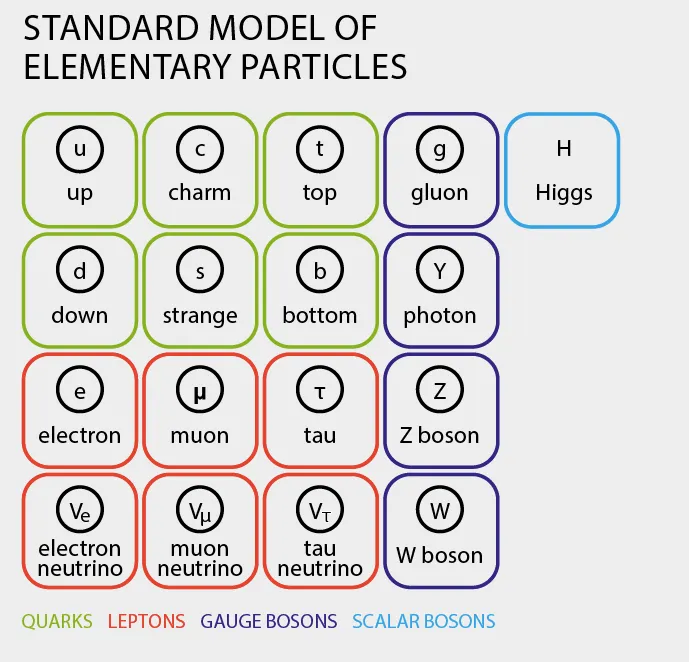Researchers in physics have announced “intriguing” results that potentially cannot be explained by the current laws of nature.
The LHCb Collaboration at CERN has found particles not behaving in the way they should according to the guiding theory of particle physics – the Standard Model.
The model predicts that particles called bottom quarks, which are measured in the LHCb experiment, should decay into either muons or electrons in equal measure.However, the new findings suggest this may not be happening, which could point to the existence of new particles or interactions not explained by the Standard Model.
“We were actually shaking when we first looked at the results, we were that excited. Our hearts did beat a bit faster," said Dr Mitesh Patel, from the Department of Physics at Imperial College London, and one of the leading physicists behind the measurement.
“It’s too early to say if this genuinely is a deviation from the Standard Model but the potential implications are such that these results are the most exciting thing I’ve done in 20 years in the field. It has been a long journey to get here.”
The Standard Model describes all the known fundamental particles that make up our universe and the forces that they interact with.However, it cannot explain some of the deepest mysteries in modern physics, including what dark matter is made of and the imbalance of matter and antimatter in the Universe.
Read more about particle physics:
- Do subatomic particles have a colour?
- What’s the smallest particle?
- Is there anything smaller than a quark?
To help solve some of these mysteries, researchers have been searching for particles behaving in different ways than would be expected in the Standard Model.
The results were produced by the LHCb experiment, one of four huge particle detectors at CERN's Large Hadron Collider (LHC).
The LHC is the world’s largest and most powerful particle collider: it accelerates subatomic particles to almost the speed of light, before smashing them into each other.These collisions produce a burst of new particles, which physicists record and study in order to better understand the basic building blocks of nature.
Researchers say the updated measurement questions the laws of nature that treat electrons and their heavier cousins, muons, identically, except for small differences due to their different masses.
According to the Standard Model, muons and electrons interact with all forces in the same way, so bottom quarks created at LHCb should decay into muons just as often as they do to electrons.
Read more about physics:
- Ghost stars: The radical theory that could solve the mystery of dark matter
- Can a planet orbit backwards compared to the other planets in a solar system?
However, these new measurements suggest the decays could be happening at different rates, which could indicate never-before-seen particles tipping the scales away from muons.
The gold standard for discovery in particle physics is five standard deviations – which means there is a 1 in 3.5 million chance of the result being a fluke. This result is three deviations – meaning there is still a 1 in 1,000 chance that the measurement is a statistical coincidence.It is therefore too soon to make any firm conclusions, the researchers say.
Physicists from Imperial College London and the universities of Bristol and Cambridge led the analysis of the data to produce this result, with funding from the Science and Technology Facilities Council.
The result was announced at the Moriond Electroweak Physics conference and published as a preprint.
What is the Standard Model?

These are the elementary particles, which together make up the Standard Model ofparticle physics. All of the atoms in the Universe are built using only the electrons and the ‘up’ and ‘down’ quarks. These interact with each other and stick together with the help of gluons and photons.
Gluons transmit what is known as the ‘strong force’ that binds together quarks to make protons and neutrons, the building blocks of atomic nuclei. Photons transmit the electromagnetic force that acts between electrically charged particles, like electrons.
The other particles in the table are also important, but for less evident reasons. For example, around 60 billion electron neutrinos stream through every square centimetre of your body every second. These neutrinos are made insidethe Sun, as a by-product of the process that fuses hydrogen into helium. The ‘weak force’ is responsible for this process of nuclear fusion and is transmitted by the W and Z particles.
The particles in the second and third columns of the Standard Model are like heavier copies of those in the first column. The existence of these heavier particles was crucial in governing the behaviour of the Universe shortly afterthe Big Bang.
Read more: